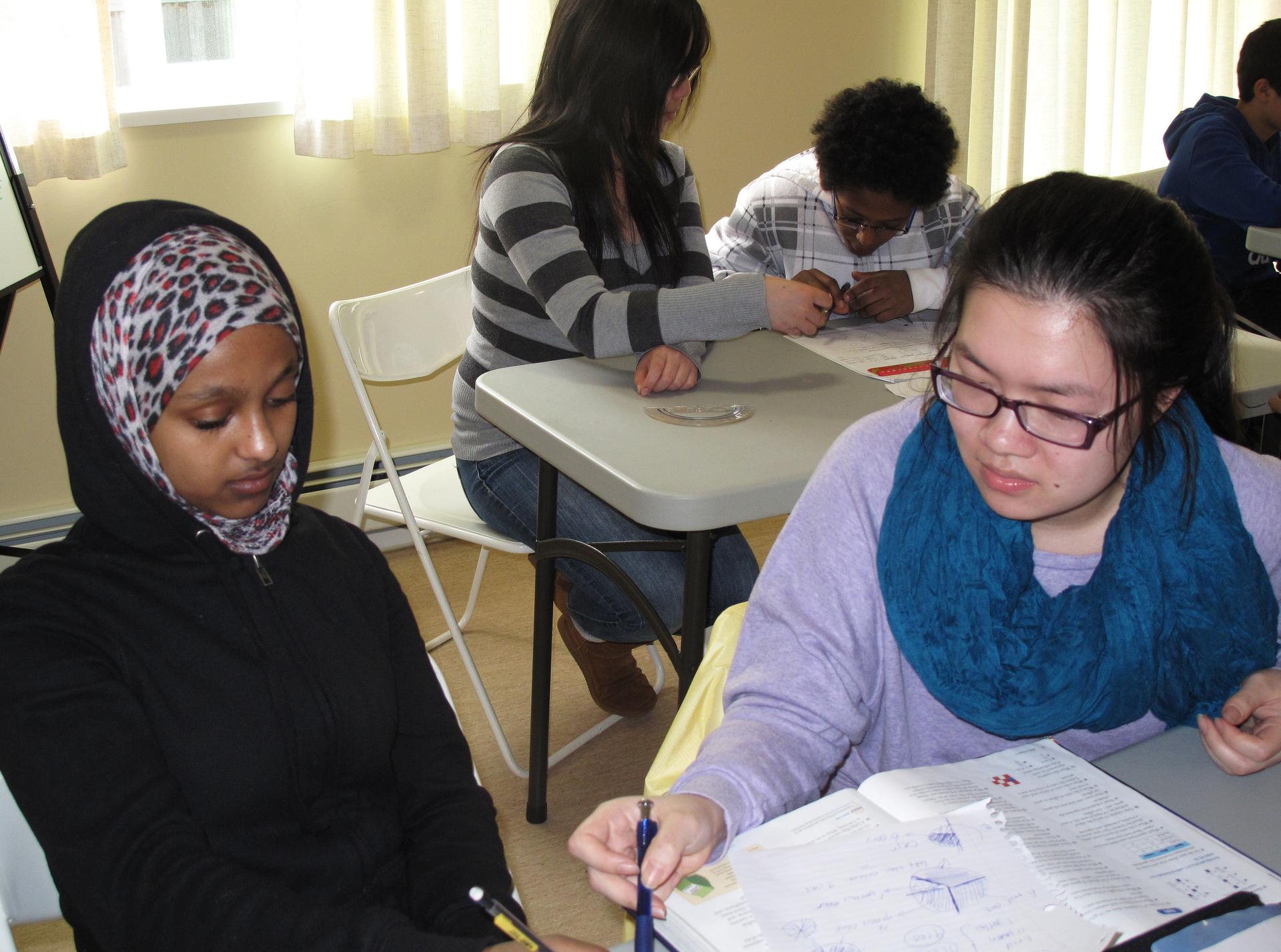Simon Fraser University students tutor young immigrant students as part of the Friends of Simon project.
One of the aspects of teaching that I have most enjoyed over the past decade is working with students from around the world. While spending the day teaching large groups of children can be sometimes stressful and even isolating, sharing the experiences and cultural knowledge of immigrant students from Australia, Cambodia, Ireland, Liberia, and Sierra Leone (just to name a few countries) has expanded the world view of everyone working and studying in our schools. To say that the conversations we have are richer for their presence and contributions is an understatement.
Nevertheless, teaching students new to the country can also come with its own set of challenges and there are just a few things, mostly learned from experience, that I wish I had known as a young teacher about how to connect with students who are new to the country.
Interacting with students outside of the classroom
Luckily, a lot of what helps me to connect with recently immigrated students works with everyone else too. Sometimes, attending a basketball game or recital can make a world of difference. For my students who are getting inundated with services to help get them caught up academically, a casual game can be a really nice break from all that. And, of course, when students are more relaxed, then they are more likely to be open about what is going on in their lives. All students should feel like there are adults who know them and care about them, and students new to the country are still building connections here and in their local community. I feel like it is such a privilege to be one of the first adults in the country with whom students connect.
Recognize that each immigrant child has unique needs that need to be acknowledged
Every student I have taught has had a unique background, and this is especially so for my immigrant students. Just to illustrate the diversity of immigrant students I have taught over the last 12 years, here are three examples:
Sophie was an Australian student here in the US for a year while her father was working at the local university. She had learned everything in a different order, so sometimes she was very bored in class and sometimes very lost.
James was from Liberia and hadn’t had much formal schooling as his family had mainly just been trying to survive the ruins left from a civil war. He was whipsmart and loved computers, but also didn’t know his times tables so it was hard to know in what program to place him in school.
Aevar was from Norway and living with his father’s family and his step-siblings in the US for the first time. He could be broody and wanted to go back home.
Related: Global Nation Education
While each of these students had very different needs, by listening to what their needs were, we were able to tailor their schooling to best meet these. Sophie took electives while topics she had already covered were in session, James caught up on some preliminary material through computer tutorials and educational games and Aevar helped to organize a cultural fair where he introduced his classmates and teachers to some of the things he loved about his home country. All of them ended up feeling more connected and invested in their schools than if they had been pigeon-holed into a standard curriculum.
Their immediate families are everything
Building relationships with their families early on is crucial to connecting with them, as is approaching conversations with an open, non-judgmental perspective. And cultural misunderstandings can be pre-empted by making it clear early on that you have their children’s best interest at heart. After all, lots of my students come through multiple school systems before they arrive in our building and the experiences they had previously weren’t always ideal. Language can be a barrier to reaching out to parents at times, but involving them in ways that enable them to feel comfortable enough to share their time and talents can make a big difference to how connected the students feel to the school community.
Be understanding
Ultimately, we have to be aware of students who are navigating a significant change in their lives. Many immigrant students, for example, have significant responsibilities at home that might differ from some of their classmates and take away from time they might otherwise devote to learning. Their comfort with typical expectations of active class participation in the US may sometimes be evolving too, as some students are more used to being expected to listen quietly and not look directly at teachers and other authority figures. We connect with students by starting from a place of compassion and demonstrating our respect through the high expectations to which we hold them.
There is so much more to know, but these are just a few of the things that I have learned along the way about connecting with immigrant students.
Ramla Gabriel teaches math and engineering at Newcastle College in England. Before becoming an immigrant herself, she taught middle and high school math and science in the US for over 10 years.Share your thoughts and ideas on Facebook at our Global Nation Exchange, on Twitter @globalnation, or contact us here.
